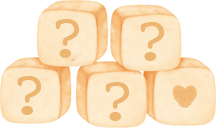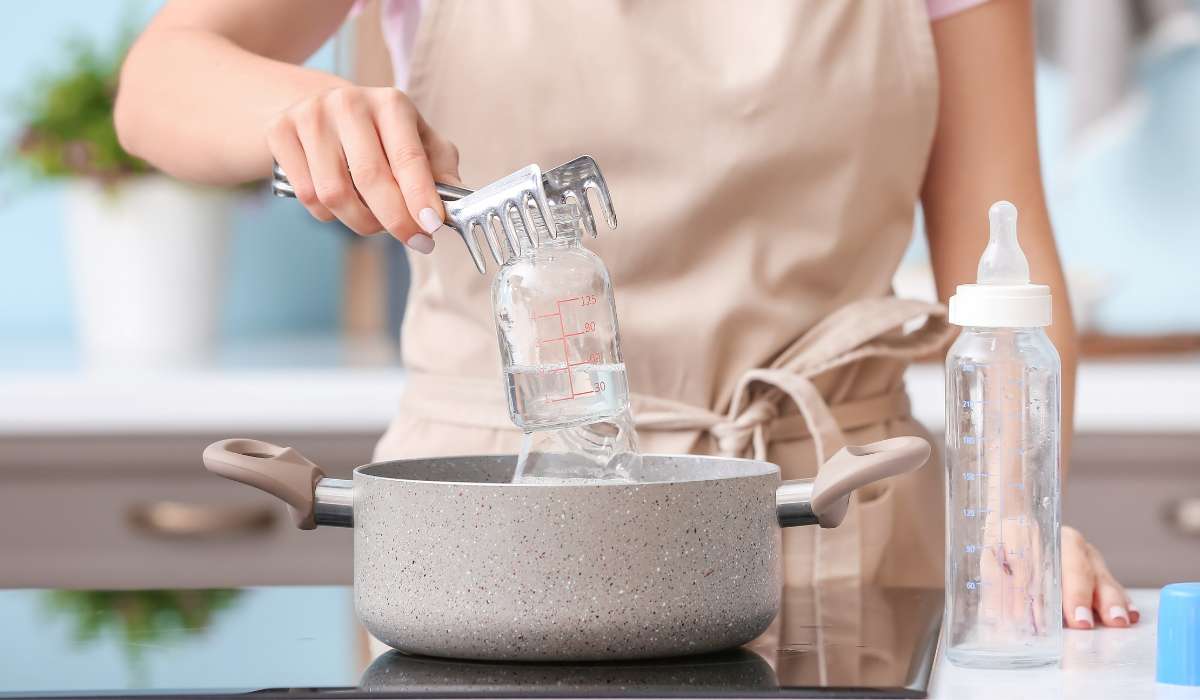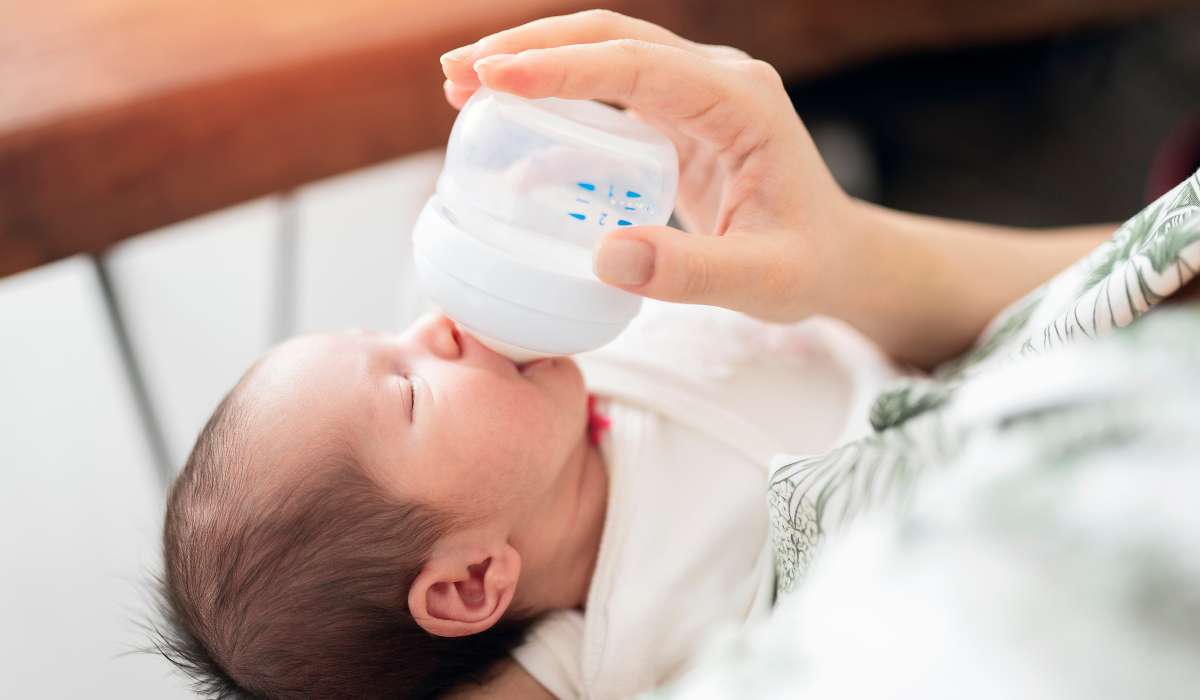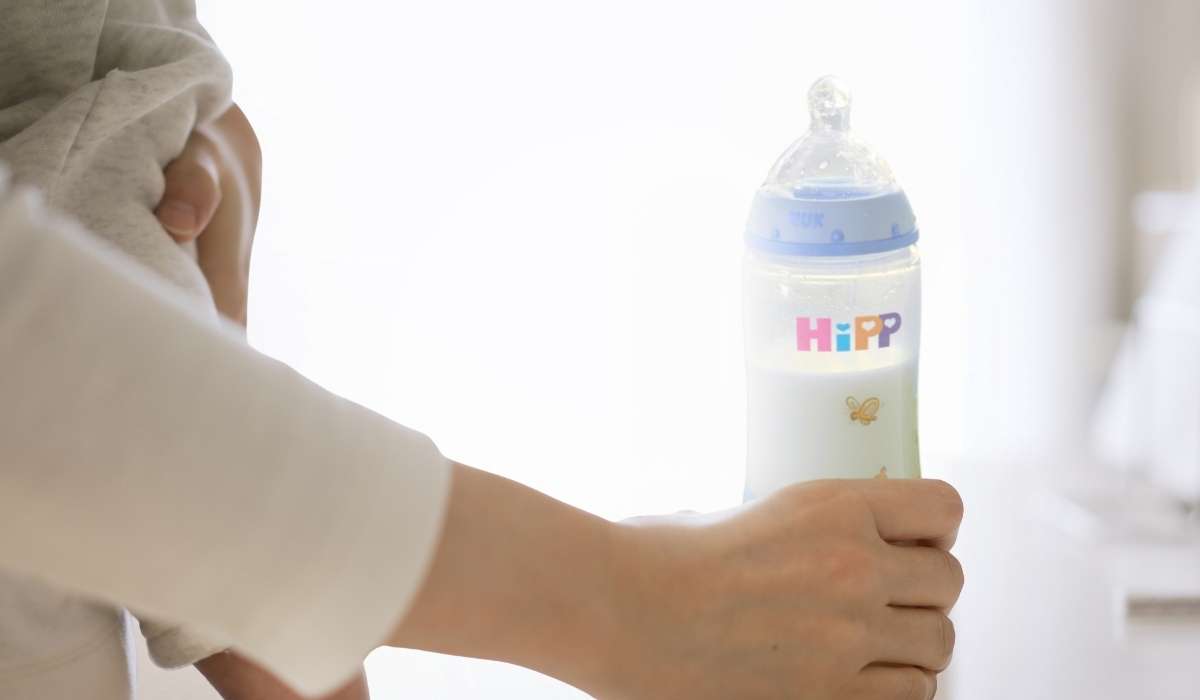Cleaning your baby's feeding items might not be the most fun part of parenthood. That being said, it's a crucial step we must take to make sure our little ones stay healthy and happy.
After all, milk in a bottle creates favorable conditions for bacterial growth. So, to keep the bacteria at bay, your baby's bottles must be squeaky clean.
Don't worry, though: we will help you with that. Today's guide will shed some light on how often to sterilize baby bottles and other safety rules you must know!
Recommendations About Sterilizing Baby Bottles
If you're a parent with a formula-fed baby, then you know that formula feeding involves a lot of steps and tools, but if you're new to this world, then let's start with the basics.

First off, make sure to clean bottles and other infant feeding items after each use. It's also crucial to get rid of any leftover formula after a feeding. The thing is, your baby can transfer germs from their saliva into the bottle, where they can grow and proliferate, and yes, that's true even if you keep your infant formula in the fridge!
Additionally, it's important to wash your baby's bottle and all the bottle parts in hot, soapy water and rinse it thoroughly under running water before sterilizing them. Oh, and don't forget to wash your hands before handling your baby's feeding items.
Now, when it comes to sterilizing your baby's bottles, most infant health experts agree that it's enough to do a sanitizing cycle once every few days (unless your baby has special requirements, which we will discuss below). With easy access to hot water and soap, there's no need to thoroughly sterilize bottles after each use.
It's also crucial to sanitize each baby bottle before the very first use. Even though it comes straight from the packaging and may seem clean, you never know what germs might be lurking inside.
Timing Is Everything: When to Sterilize Baby Bottles
Keeping your baby safe involves multiple steps. This, of course, can be overwhelming sometimes. But if you remain consistent, things will get easier with time! One of the crucial rules of cleaning bottles is timing. You need to know when to wash and sanitize each baby bottle to keep your little one safe.
As we said above, washing and sanitizing your baby's bottle for the first time should be done right after you remove it from the packaging and before you prepare to mix formula.
Make sure you wash all the used items after each bottle feeding. It's also best to sanitize your baby's bottle (and other parts) once every few days. Remember not to neglect your bottle brush! It's important to get into the smallest crevices to get rid of all potential bacteria.
Importantly, if your baby is younger than 3 months or was born prematurely, you need to be stricter with your cleaning process. In this case, it's best to sterilize baby bottles after each feeding or at least once a day. The same rule applies to babies with a weakened immune system.
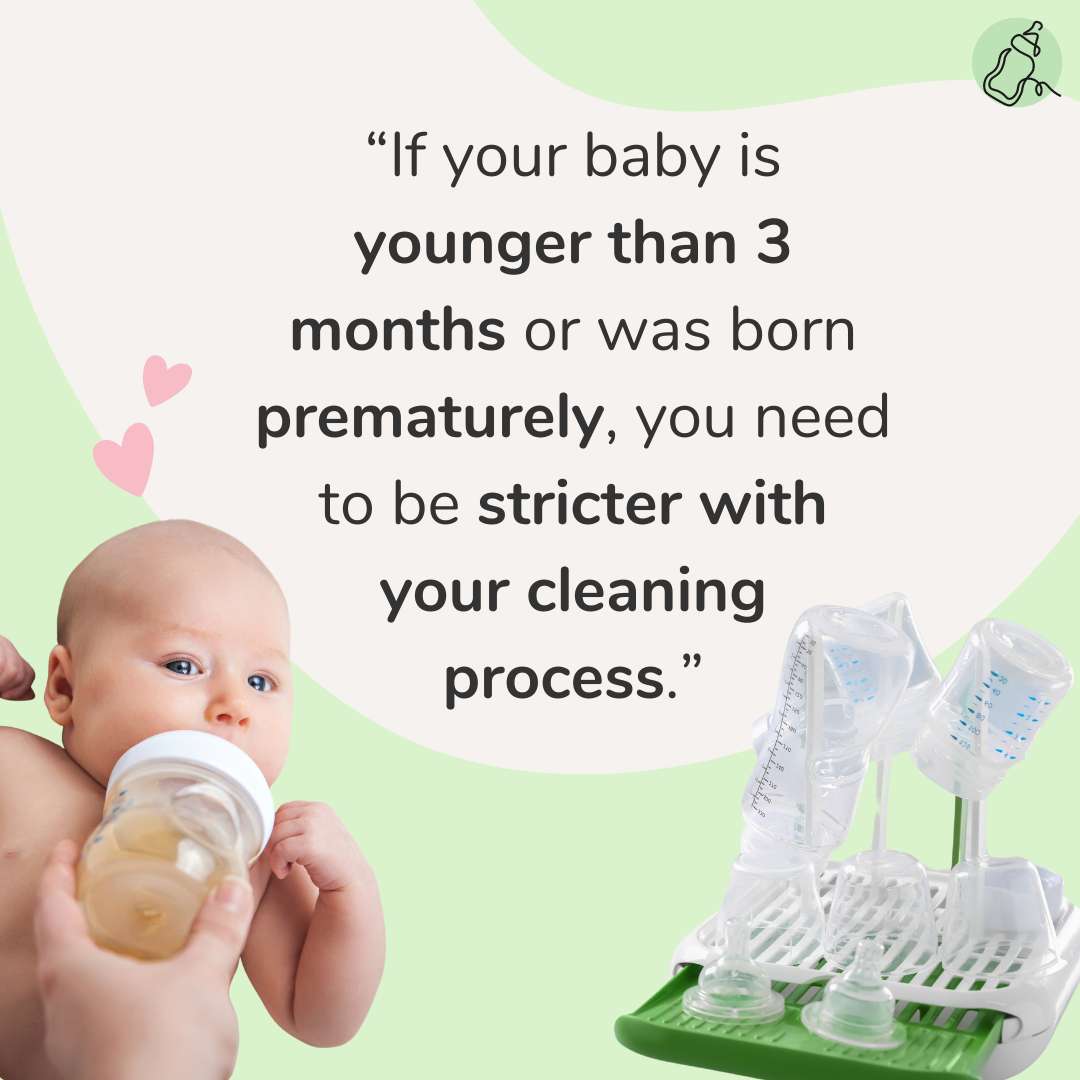
Choose Your Method: Different Ways to Sterilize Your Baby's Bottles
There are several safe sanitizing methods available, so feel free to choose what works best for you. A quick reminder, though, no matter which method you opt for, don't forget to wash the bottle and the rest of the feeding items with warm water and soap before you begin the more thorough sanitizing process. It's also a good idea to check the manufacturer's recommendations first because some of the feeding items might not be able to withstand certain sterilization methods.
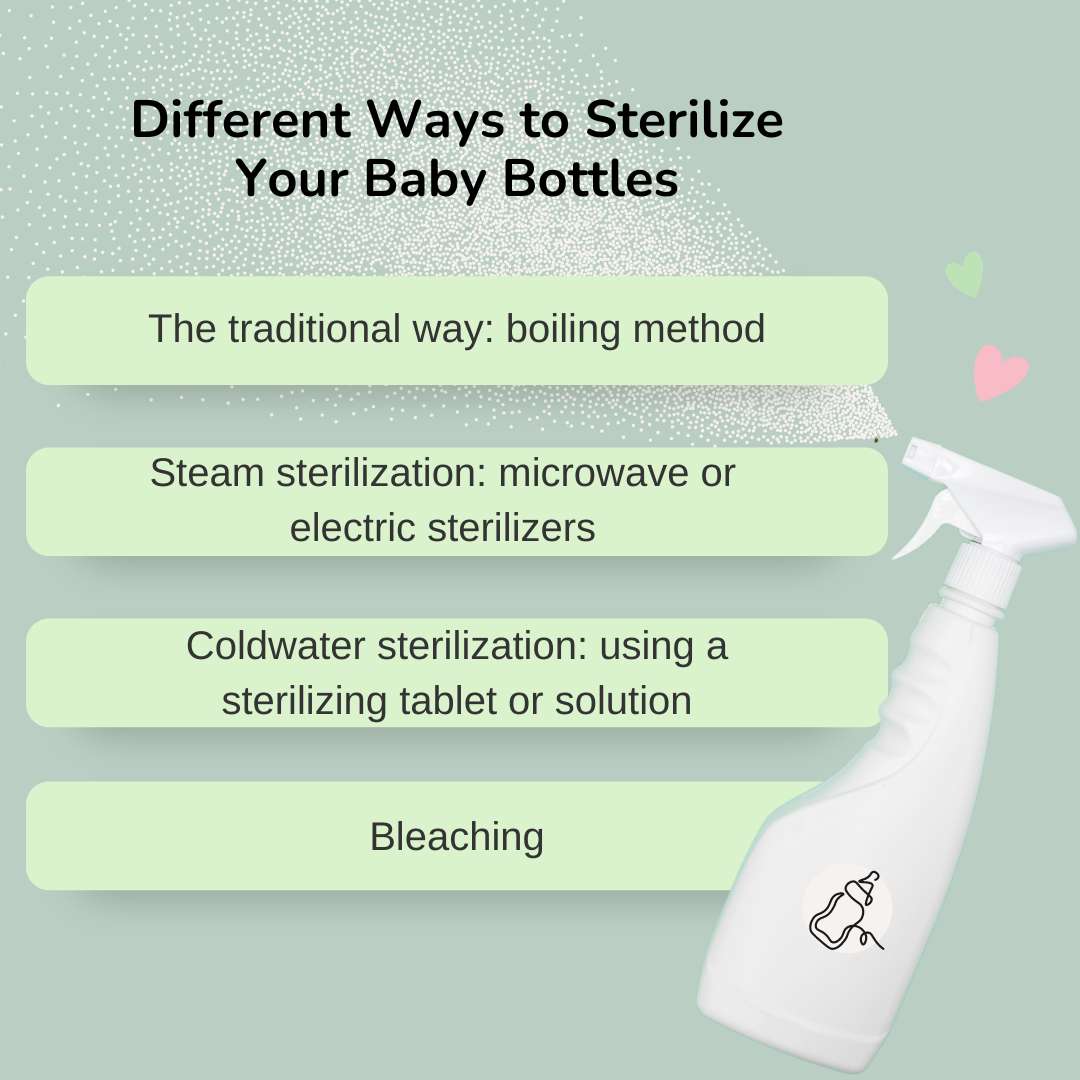
Now, with that in mind, here are the most common sanitizing options you can pick from:
1. The traditional way: boiling method
This is the most popular technique because it's cheap, and all you have to do is disassemble your baby's bottle and other cleaning items and put them into a hot pot of water. Cover your feeding instruments with water, put your pot on the stove, and bring the water to a boil. Let this baby bottle "soup" boil for about 5 minutes. And wallah! After that, you can remove the sterilized items using clean tongs and let them air dry.
2. Steam sterilization: microwave or electric sterilizers
If you decide to buy an electric steam sterilizer, you will make your life much easier when bottle-feeding your little one. Simply place the disassembled items inside and follow the manufacturer's instructions (which usually involve just pressing a button or two). However, keep in mind that electric sterilizers can be quite pricey.
With a microwave sterilizer, things are a bit more tricky. First off, you must ensure the microwave is clean. Next, you should fill the bottles with water, only halfway. Place them in the microwave, choose a high-temperature setting, and microwave the bottles for about 1-2 minutes. Remove the items carefully (tip: use oven mitts), pour the water out, and let them air dry.
If your dishwasher has a steam sanitizing mode, you can use that, too. Of course, you should make sure your baby's bottles and other feeding items are dishwasher safe first.
3. Coldwater sterilization: using a sterilizing tablet or solution
This method is also quite simple. You need to add a sterilizing solution (or tablet) to cold water and soak your feeding items for a bit. The duration would depend on the manufacturer, so make sure you read the instructions carefully before you put the bottle in.
This method is especially handy when travelling or being away from home and your usual tools. Sterilizing tablets or solutions are easy to come by, and there are plenty of affordable options out there.
4. Bleaching
This method is usually suggested when you cannot boil or sterilize baby bottles with steam. However, bleaching is similar to using a sterilizing tablet, so there's nothing wrong with this method.
First, you need to prepare the bleaching solution. Typically, two teaspoons of unscented bleach is enough for 16 cups of water (1 gallon). Next, you need to submerge your bottles and other items and let them soak for at least 2 minutes. An extra step you can take is squeezing the bleaching solution through the nipple holes. Then, you can remove the bottles using clean tongs and let them air dry. It is advised not to rinse them to prevent any potential exposure to germs.
Beyond Sterilizing: Tips for Maintaining Clean and Safe Feeding Supplies
We know it might seem like a lot of rules, but the reality is that any bottle has the potential to harbor bacteria, and we want our healthy babies to avoid that.
So, follow these steps to make sure your little one gets their formula or breast milk only from clean, safe feeding items:
-
Always wash your hands before handling baby bottles.
-
Rinse out the leftover formula, then use hot water and soap to thoroughly clean each item.
-
Rinse and allow feeding tools and bottles to air dry (make sure the drying surface is clean and try to use a fresh towel instead of a drying rack).
-
Always clean the basin and the bottle brush too.
-
Store clean bottles and other feeding items in a clean, enclosed area, such as a closed kitchen cabinet.
-
Inspect the bottles and the rest of the feeding accessories regularly. It's crucial to watch for damage, cracks, warping, stains, and tears. You should replace damaged or old bottles (and other items).
Answering Common Questions About Sterilizing Baby Bottles
Let's dive into some commonly asked questions about the proper care and sanitation of various baby feeding supplies. Here are some key insights to ensure everything your baby uses is safe and clean!
How do I sanitize other feeding supplies such as pacifiers, breast pump parts, etc.?
Luckily, you can sanitize most infant feeding items the same way you sterilize bottles - by boiling, steaming, or using a sanitizing solution/tablet.
Can the dishwasher clean and sterilize baby bottles effectively?
If you use a hot water setting and have a heated drying cycle (which can work as sanitizing), a dishwasher can effectively clean and sterilize your baby's bottles and other feeding items.
When should I replace my baby's bottles and other infant feeding items?
Look for such signs of extensive wear as color changing, thinning of the material, lingering odors, stains that don't go away even after cleaning, swelling, stickiness, cracks, or tears.
Wrapping Up: Committing to Clean and Safe Feeding Supplies for Your Baby
We hope we've cleared up how often to sterilize baby bottles for you. Now that you know how to sanitize and wash bottles properly, you can tackle daily feedings with ease. Just stick to following official guidelines and consult your baby's doctor to ensure the safest practices when feeding your baby.
And remember: this may seem like a lot, but you will get the hang of it. Just remind yourself that maintaining clean feeding supplies is a vital step toward keeping your baby healthy, safe, and happy.
Breast milk is the best source of nutrition for babies. Before altering your baby's diet or feeding routine, consult your healthcare provider for personalized recommendations. The information in this article is strictly for informational purposes and is not a substitute for medical advice.
Sources:
- Centers for Disease Control and Prevention: How to Clean, Sanitize, and Store Infant Feeding Items?
- National Health Service: Sterilising baby bottles
- WHO: Safe preparation, storage and handling of powdered infant formula: guidelines
